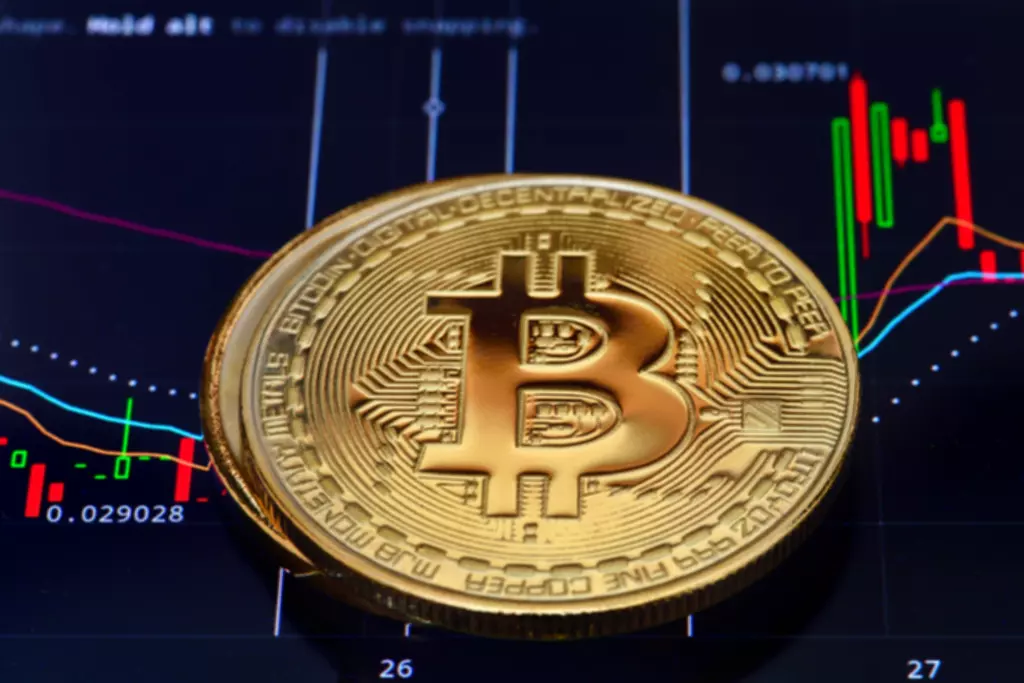Liquidity Connectedness In Cryptocurrency Market
Content
A functioning crypto liquidity pool must be built in such a way that crypto liquidity providers are incentivized to stake their assets in the pool. As a result, most liquidity providers earn trading fees and cryptocurrency rewards from the exchanges where they pool tokens. When a user provides liquidity to a pool, the provider is frequently compensated with liquidity provider tokens. LP tokens can be valuable assets in their own right and can be utilised in a variety of ways within the DeFi ecosystem. For most of finance’s modern-day history, high net-worth market makers have been responsible for facilitating trades.

On the other hand, stocks and cryptocurrency markets have high liquidity, which depends on the traders’ active participation on the trading floor. Since NFTs can hold separate values for each token, Uniswap V3 lets liquidity providers choose the price range of crypto assets that they wish to provide liquidity at. This custom price range is represented by an NFT which you can use to remove your liquidity at any time.
It supports a variety of digital assets and connects organizations to a rich set of liquidity venues to source optimized pricing via smart order algorithms. By becoming a market maker himself, the exchange operator eliminates the need for third-party companies to provide liquidity. Another way to provide liquidity to exchange is through liquidity mining. One of the most recent such examples is the North Korean Lazarus group hacking Axie Infinity for $625 million.
Btc Price
In addition to acting as bonus incentives, these governance tokens give holders a vote in proposed upgrades to a DEX. A few prominent DEX-issued tokens include Uniswap’s UNI, PancakeSwap’s CAKE, and SushiSwap’s https://xcritical.com/ SUSHI. If you are concerned about the legitimacy of the domain, do not connect your cryptocurrency wallet. Liquidity pools are also used in field farming, blockchain gaming, and so much more.
People, rather than market makers or other users, transact against the liquidity in a smart contract. These large pools of funds supply DEXs with the necessary crypto liquidity to allow other users to swap tokens without relying on external firms or large investors. People with a private crypto wallet and cryptocurrency can add their tokens to these protocols.
- The more liquidity pools and DEXs catch on, the less influence centralized markets may have.
- Liquidity provider tokens are proof that you own a piece of the liquidity pool you stake your crypto assets in.
- These results are somewhat different from our earlier estimates as XMR replaces XRP to form a cluster with BTC and LTC.
- The increase in frequency and volume of trading helps to enhance liquidity.
- Knowing your investment time horizon and how quickly you need access to cash in case of an emergency can help you decide whether to invest in less liquid assets.
- Verify the spelling of web addresses, websites, and email addresses that look trustworthy, but may be imitations of legitimate websites.
Furthermore, the price movement of illiquid virtual currencies is sometimes out of logic – some deals may affect the market situation in general. Capital must constantly flow through financial markets, including crypto, to allow buyers to make timely trades. To ensure traders can readily buy and sell their assets, exchanges place the highest importance on liquidity. The ability to exchange an asset for cash quickly and participate in efficient markets reduce direct and indirect transaction costs. A crypto exchange’s liquidity determines how easily a trader can exchange cryptocurrencies on the platform.
Institutional investors’ liquidity buildups in the cryptocurrency market also potentially strengthen the demand-side channel of liquidity connectedness through correlated trading. Finally, volatility may also induce liquidity connectedness (Chuliá et al. 2020), which aligns with the theoretical framework proposed by Brunnermeier and Pedersen . According to this framework, higher market volatility contributes to a rise in liquidity connectedness, which results from a decline in liquidity provision available for financial intermediaries. Many decentralized platforms leverage automated market makers to use liquid pools for permitting digital assets to be traded in an automated and permissionless way.
Build Your Crypto Portfolio On The Coinswitch App Today
Price slippage represents a loss for the trader due to low liquidity on the Buy or Sell side of the order book. In this example, the lowest selling price is $60,770.00 and the highest bid is 58,200.00. We will explore an example of a highly liquid market and one with low liquidity.
B2Trader Boosts its Liquidity Offering – Now 100 Pairs With 100×100 Order Book » Brave New Coin – Brave New Coin
B2Trader Boosts its Liquidity Offering – Now 100 Pairs With 100×100 Order Book » Brave New Coin.
Posted: Fri, 14 Oct 2022 16:26:00 GMT [source]
Therefore, we advise against purchasing and trading obscure crypto assets with limited liquidity and popularity. Crypto exchanges and other trading platforms enable market participants with such an opportunity. The more liquid What is Crypto Liquidity a cryptocurrency exchange is, the less time traders need to execute their orders. As for illiquid cryptocurrencies, supply and demand are not correlated, and a holder needs to sell an asset lower than its market price.
Why Is Liquidity Important In Cryptocurrency Exchange?
Contrarily, factors such as Japan declaring BTC as a legal tender on April 1, 2017, led to enhanced liquidity connectedness. We first apply the spillover model of Diebold and Yilmaz to compute the liquidity connectedness across our sample cryptocurrencies. Moreover, we implement the connectedness framework of Baruník and Křehlík to further explore the time–frequency domain aspect of liquidity connectedness. Such studies highlighted its superiority over other low-frequency liquidity proxies, which often do a poor job in capturing liquidity in financial markets. Brauneis and Mestel also used this measure for the computing liquidity for the cryptocurrency market. Consequently, research into cryptocurrency markets has grown exponentially in recent years.
A liquid market is one where there are many bids and offers and participants can easily enter and exit for minimal transaction cost. The market usually becomes more competitive as more of an item is bought and sold. Curve – A decentralized liquidity pool for stablecoins based on the Ethereum network. When it comes to the Good Crypto mobile app, you can rank the most liquid markets from high to low. Once you have selected a market you would like to trade, for example, Filecoin or FIL in the third screenshot above, you can discover a list of exchanges that offer the asset.
It is debatable just how liquid cryptoassets are, and much of this can depend on which cryptoasset is being discussed. In general, crypto is less liquid than cash equivalents like US treasuries, but usually more liquid than real estate. The most traded cryptoassets such as Bitcoin and Ethereum are most likely as liquid if not more so than gold.

However, you should note that the liquidity of cryptocurrencies isn’t a static concept and is likely to increase further if adoption rises. If more investors buy the asset either to trade or hold and it becomes more widely accepted as a medium of exchange, the liquidity of that crypto asset will increase over time. Crypto exchanges with a higher trade volume indicate a greater number of buyers and sellers on their trading platform.
Regional Btc Flows
Learn how to protect yourself from big losses with this simple but powerful investment strategy. The flow of assets to and from illicit services can be observed due to the transparency of the blockchain. Illicit flows are serious and can be worth significant amounts, but are typically a small minority of total flows. The TRC-20 token standard allows for tokens to be created on the TRON network. Generally speaking, the more liquidity, the smaller or “tighter” the spread. And the size of its “population” is what determines the amount of liquidity available.
When other investors consume the liquidity provided, organic volume is generated. As soon as a liquidity provider deposits money into the pool, smart contracts take complete control of setting the price. An impermanent loss can occur when a liquidity provider adds tokens to a liquidity pool. The potential for loss stems from the fact that a liquidity provider must add an equal value of the two tokens in the liquidity pool. For example, low liquidity leads to slippage, an issue in which the actual returns on a token sale are less than what the expected price would have brought. In other words, the price received is less than the price named at the beginning of a trade.
What Are Liquidity Pool Tokens?
If new orders rapidly appear to replace previous orders on the order book, this is another good indicator of high liquidity. ” lesson, the spread is the difference between the best bid .and best ask . Find the approximate amount of currency units to buy or sell so you can control your maximum risk per position. From basic trading terms to trading jargon, you can find the explanation for a long list of trading terms here. The offers that appear in this table are from partnerships from which Investopedia receives compensation. The pool of funds is under the control of a small group, which is against the concept of decentralization.

His areas of research interest include sustainability disclosures, applied financial econometrics, technical analysis, fintech and corporate finance. The global adoption of cryptocurrency is on the rise, with analysts predicting that the number of crypto owners will reach one billion people by the end of 2022. This fierce growth of cryptocurrency is fueled by the more than 20,000 crypto projects that have been making money in crypto since Bitcoin debuted in 2009. Cross-chain communication between blockchains allows different protocols to verify data and transactions wi… Bitcoin, the world’s first and most actively traded digital asset, is often recognized as being the most liquid virtual currency.
Because the more buy orders (“bids“) and sell orders (‘asks“) placed for a cryptocurrency, the closer the bid and ask prices are. It’s important to know the difference between “liquidity” versus “volume” as both terms are popularly used in crypto trading. For example, if you want to buy some bitcoins and there aren’t many bitcoin traders on a particular exchange, buying only a small amount of bitcoins might cause a massive increase in price. Allows people to provide liquidity and receive rewards, interest or an annual percentage yield on their crypto.
Liquidity pools use smart contracts on Ethereum’s blockchain to provide liquidity for decentralized exchanges. Liquidity providers can use their Ethereum wallet to send tokens to a liquidity pool, where investors’ funds are aggregated for liquidity on DEXes. In the Financial Market, Liquidity is one of the most important factors. It is advisable to trade in a market with high liquidity so that one can enter and exit from the market easily.
What Is Accounting Liquidity?
The first and emerging strand of literature that looks at liquidity in the cryptocurrency market has not emphasized the connectedness of liquidity among these markets. Kim and Dyhrberg et al. suggested that BTC’s attractiveness for retail trading lies in its lower transaction costs. By implementing different low-frequency liquidity indicators, the author found that BTC’s liquidity is typically lower than stocks and that liquidity differs throughout exchanges. Similarly, Smales suggested that the liquidity for BTC is lower than other safe-haven investments, such as gold. Considering different sets of cryptocurrencies, Brauneis and Mestel and Wei indicated a positive relationship between liquidity and price efficiency . Koutmos developed a proxy for liquidity uncertainty by relating it to the market features and trading activity of BTC.
This notion implies a heightened risk of liquidity transmission across cryptocurrencies. Moreover, cryptocurrencies are tightly interlinked (Antonakakis et al. 2019). Thus, trading in cryptocurrencies depends on trading cost (Shahzad et al. 2021a,b), how crypto liquidity links to one another, and market-wide liquidity. In the early phases of DeFi, DEXs suffered from crypto market liquidity problems when attempting to model the traditional market makers.
Typically, PoS networks are also smart contract platforms, making it possible to create a new type of market maker — Automated Market Maker . While traditional market makers are electronic, market makers like Binance/Coinbase/Gate.io have an additional layer to take into account — blockchain. As a distributed record of all transactions that are time-stamped in a chronological order, transactions on a blockchain create an immutable chain. Although the decentralized trading sector contains a great number of liquidity pools, only a select few of them have established themselves as the investors’ first choice.
You could also face slippage, which is the difference in the price you wanted to sell an asset for vs. the price it actually sold for. Liquidity is a term used in the financial world to refer to how easily an asset can be bought or sold. Liquidity crises occur when the markets for various assets freeze up, making it hard for businesses to sell their stocks and bonds. In such a scenario, the demand for liquidity increases dramatically while its supply drops, which usually leads to mass defaults and even bankruptcies. One of the key factors affecting liquidity in the cryptocurrency market is trading volumes. You can check out any cryptocurrency market cap rankings website to see daily volumes, with a higher volume indicating that more people are buying and selling coins.
A good way to think of each crypto exchange is to see them as individual “islands“. This is because each and every crypto exchange has its own “population” of buyers and sellers. Something is described as “liquid” if it’s it can be bought or sold easily without substantially moving its price up or down. The “ease” factor is based on the time required to execute the transaction.
